Every great society has its great leaders. These are the people who have a vision for what a society could be and put their heart and soul into making that vision a reality. Sometimes, these people are loved. Other times, not so much.
Either way, by guiding their people, these leaders play a critical role in shaping the course of a society. And their accomplishments and failures also reflect a good deal about what life was like during that time.
Ancient Egypt carved out 1,500 years or so of history as an independent nation. During this time, they produced an impressive “dream team” of leaders, all of whom helped propel Egypt to its top status.
So who were these phamous pharaohs of Egypt? Let’s meet them, listed in the order in which they appeared.
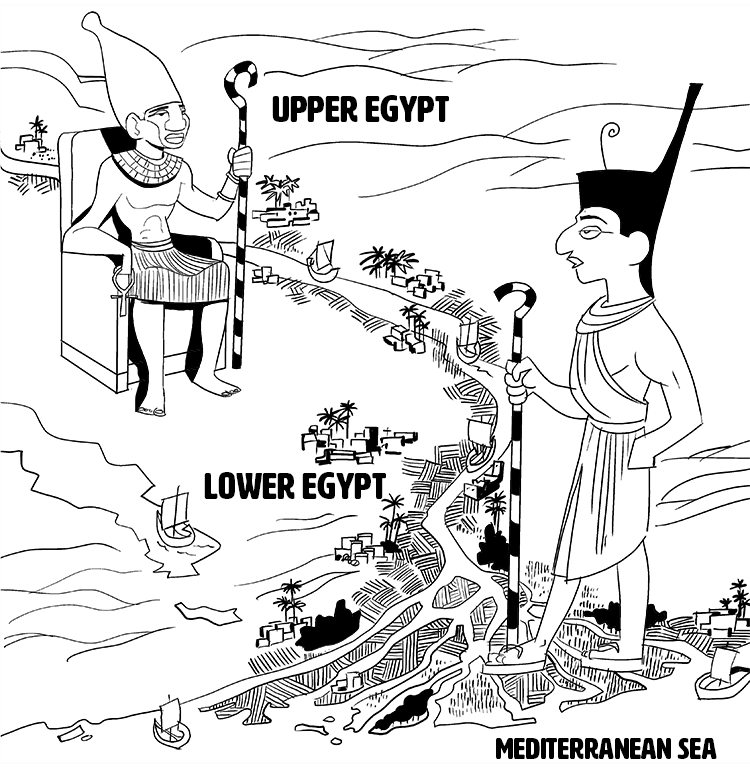
Early Dynastic/Old Kingdom Egypt
Up until around 2500 BC, there was Upper and Lower Egypt. There was little political unity and war was frequent. Eventually, the two lands came together as one, launching a new era in Egyptian history. First came the Early Dynastic period, a span of two dynasties that saw Egypt unite. From there emerged the Old Kingdom, Egypt’s first golden age.
The kings that helped bring this to fruition are etched forever in Egypt’s history books.
These are their stories.
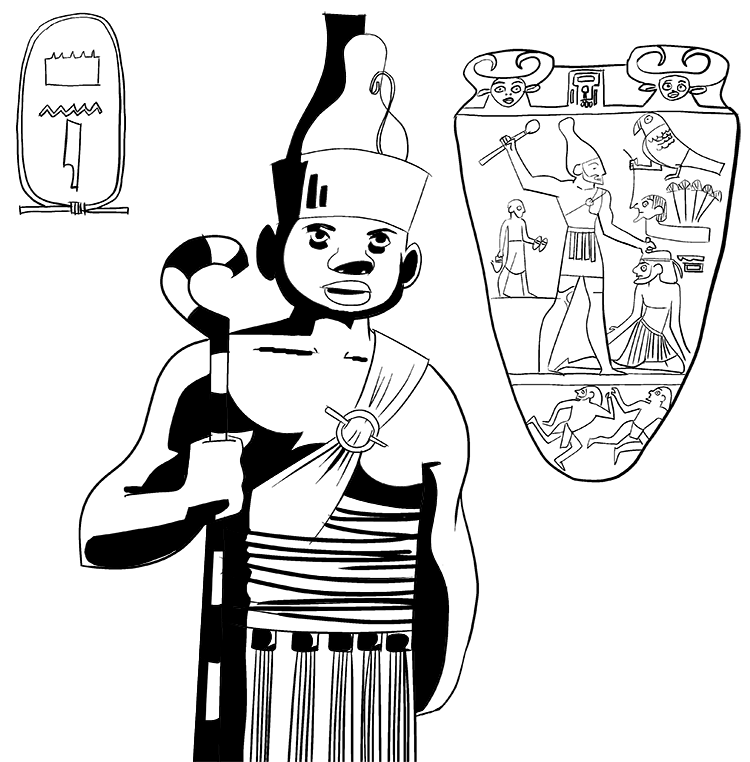
King Menes/King Narmer
If you’re the first one to do something cool, you pretty much always become famous for it. And that’s what happened with a guy named King Menes.
He was the first king to unify Upper and Lower Egypt. This makes him the first king of Egypt. Pretty cool, no?
But wait! There’s someone else.
We think Menes was the first king based on the reference given by Manetho, an Egyptian priest who lived during the times of Greek rule, some one thousand years after unification.
He probably got this from the various mentions of the name Menes in some texts from ancient Egypt. But this man’s true identity has always been difficult to determine.
Things were made even more complicated by the discovery of King Narmer.
His name appears on kings lists, and is also written on stone palettes and papyruses, as the first king of unified Egypt.
The debate raged in the historical community for some time, but, eventually, the evidence spoke the truth. Turns out Menes is a title, one that means, “he who endures,” and it was often used to reference the first king of Egypt, whose name was Narmer.
Kind of confusing? Yes. Even more so when we consider the fact that not every historian agrees these two men are the same.
We may never know the truth for sure, but either way, this guy is one of Egypt’s most famous pharaohs. Without him, Egypt wouldn’t exist.
Now, whether or not you want to call him Narmer or Menes? Well, that’s up to you.

Djoser
After Egypt united under Narmer, things just got better and better for Egypt. The king got stronger and brought more territory under his control, and little by little, Egypt turned into a force to be reckoned with.
Then a man named Djoser steps up to the plate to be king. In a bold move, he relocated the capital to Memphis, which was bigger and more powerful than its previous home, Thinis.
He also built on and strengthened the “nomes” system of government, which broke Egypt into provinces that were governed by local families loyal to the king.
In doing this, Djioser ushered in an era of unprecedented prosperity to ancient Egypt. And with all this wealth he built things. Temples, tombs, statues, you name it. But he also built something no one had built before him: a step pyramid.
People had constructed pyramids before, but they’d never done it using the step method. This meant building the pyramid up in layers, creating flat surfaces where more stone could be placed. Not just piling stones on top of one another, which could only be done to a certain height.
This type of construction allowed for much larger pyramids, an ability the Egyptians would later exploit.
Of course, Djoser himself didn’t exactly come up with this idea. It’s generally credited to his chief advisor Imohtep, and he had lots of workers to help him build it. But he paid for it and was in charge, so he gets the credit. As always.
Despite this, Djoser’s contribution to Egyptian history is unparalleled. He launched what is now known as “the age of the pyramid builders.”

Khufu
When we think of ancient Egypt, one image usually comes to mind: the pyramid.
The truth is that the Egyptians built lots of pyramids, but the ones in Giza, which sits just outside modern-day Cairo, are world famous. Mostly because they are massive. The tallest one, built by Khufu to be his tomb (yes, this is an enormous tomb), remained the tallest structure in the world for nearly 3,000 years.
Building the pyramids was Egypt’s announcement to the world that it had arrived and that it was here to stay. And they came about because of the ambition and leadership of Khufu.
This project was the first one of this size to ever be attempted by the Egyptians, and boy did they nail it! The coordination of people and natural resources to complete it suggests that by this time Egypt was operating as a well-oiled machine.
People were fed, borders were secure, wealth was coming in from trade.
Times were good.
So, maybe Khufu gets remembered because he ruled during really good times, and not because his rule brought about good times?
It’s a chicken and the egg type of thing. But in the end, Khufu, thanks to his massive pyramids, gets to join this dream team of famous pharaohs.
Middle Kingdom
All good things must come to an end, and so it was with the OId Kingdom. After its fall, Egypt went into disarray. But things came back together with the rise of the Middle Kingdom.
Like all middle children, the kings of the Middle Kingdom have to fight for attention in this group. This was not Egypt’s most glorious hour, yet it’s an important era in their history.
These are the tales of the famous pharaohs of the Middle Kingdom:
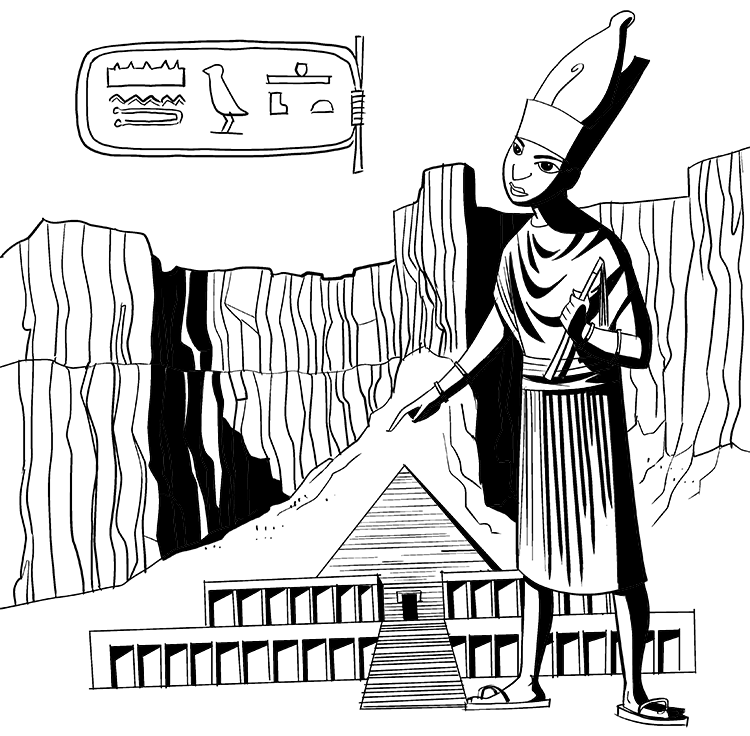
Mentuhotep II
Just like we celebrate the person who gets the party started again after something happens to kill the buzz, Mentuhotep II is remembered for reunifying Egypt.
The period in between the Old and Middle Kingdoms is called the “First Intermediate Period.” Sounds official, but all it really means is that there wasn’t one clear ruler of Egypt.
During this time, the various nobles scattered throughout the land fought one another for control. Eventually, Mentuhotep II, a powerful king out of Thebes in Upper Egypt, emerged victorious and restored order in Egypt.
One of his first moves was to restructure Egyptian government so that he had more control. The Old Kingdom fell apart because regional governors got too powerful. But Mentuhotep II wasn’t going to let this happen.
This move allowed the Egyptian government to stabilize, and this once again opened another period of peace and prosperity, known as the Middle Kingdom.
So, while Mentuhotep II might not get the glory that Menes/Narmer get, he jump started the party and got Egypt back on track towards eternal glory. That’s got to count for something, no?
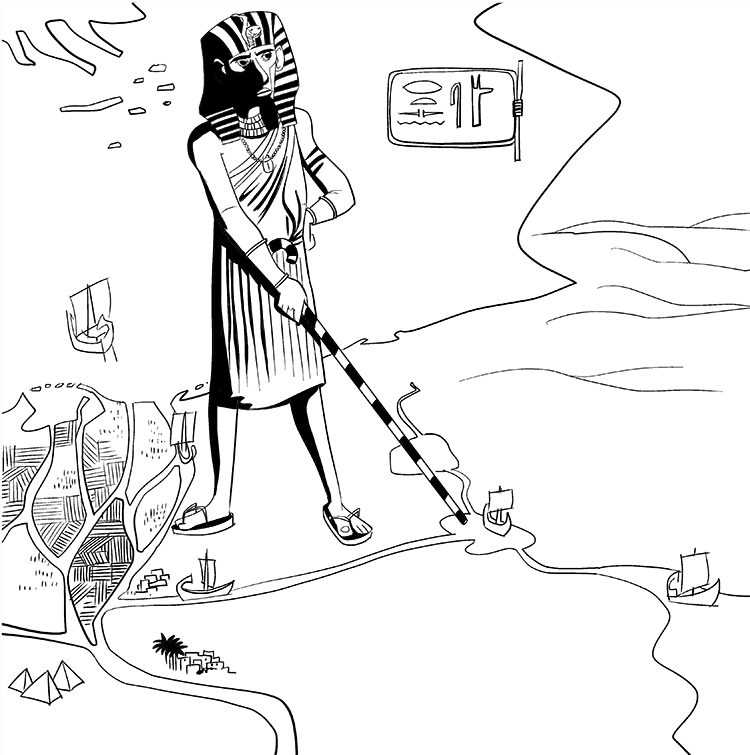
Senusret III
The Middle Kingdom was the shortest of Egypt’s three defining periods (Old, Middle, New Kingdoms), so the pharaoh bench from this period runs a bit thin.
Next to Mentuhotep II, Senusret III stands out as this era’s next most significant leader.
He makes it to the table mainly because of his skills as a military leader. During his rule, he ran extensive campaigns throughout Nubia, Egypt’s neighbor to the south. This expanded Egypt to new heights and also brought in lots of gold.
Unsurprisingly, Egypt’s friends throughout the ancient world wanted a taste of this wonderful, shiny metal, so they began to trade for it. This brought even more stuff into ancient Egypt and made the land richer and richer.
To facilitate all of this, Senusret III built an extensive canal network along the Nile River to help make it more navigable for all. What a guy!
One might say that Senruset III inherited a prosperous Egypt and only improved upon it. But this is no small task. Plenty of world leaders have inherited something good only to mess it up in a big way. Plus, Egypt reached the peak of its wealth and power during the Middle Kingdom under Senusret III. You get bonus points for that.
New Kingdom
The Middle Kingdom fell to foreign invaders from the east — the Hyksos. Not good. And things only got worse.
The Bronze Age Collapse, which produced a decline in civilization all over the world around 1100 BC, made life, mainly farming and trade, much more difficult than it had been. And so Egypt fell into yet another one of those dreaded “intermediate periods.”
Eventually, Egypt emerged from the ashes and was stronger than ever before. With more than a thousand years of experience behind them, the Egyptians managed to stand tall once again, launching an era of prosperity known as the New Kingdom.
Things took a bit longer to get going during the New Kingdom, so the first pharaohs to make the list come a little later down the line. Let’s get to know them:
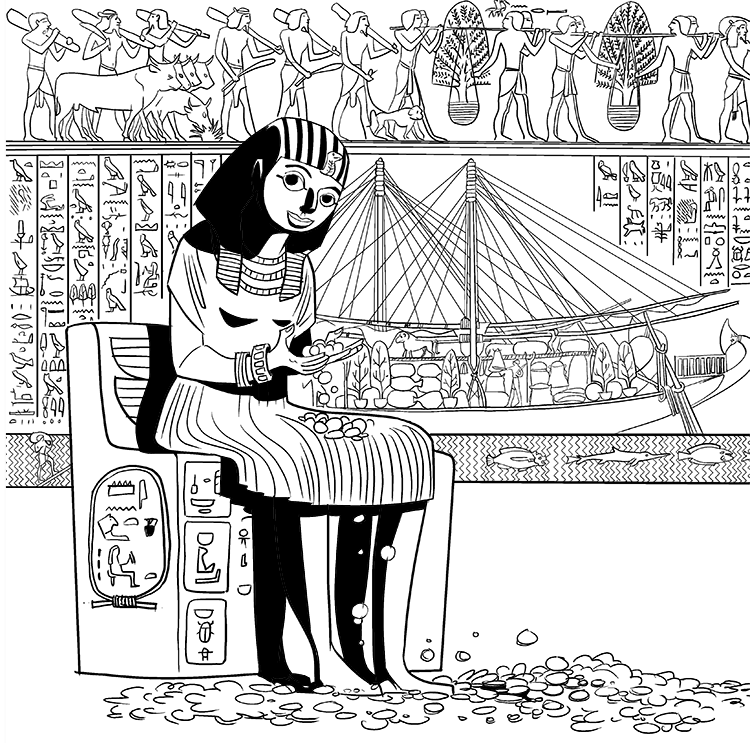
Queen Hatshepsut
Yes, you read that right: queen. Up until now, the pharaoh’s club was mainly a men’s club. Some women had managed to gain considerable political influence, but few made it to the post of almighty pharaoh.
However, during the New Kingdom, Queen Hatshepsut changed the narrative and became a powerful female pharaoh.
She took control first as a queen regent since her husband died when her son was still a baby. But after she got into the driver’s seat, she realized, “hey, this is pretty nice!” and so she tried to figure out a way to stay.
To do this, she came out and declared herself to be the daughter of Amun, the Egyptian creator god who is also one of the most important deities from ancient Egypt. Not a bad idea…if it works.
Well, it did. It turns out the people loved her and were cool with a woman being their pharaoh, and so she was able to stay on and rule not as a regent but as a pharaoh for real.
Once she had the backing of the people, Hatshepsut set out to make her mark. She commissioned several important construction projects, mainly temples and tombs near Thebes. But she also connected Egypt with Punt.
A small, remote trading culture towards the southern end of the Red Sea, Punt had valuable resources for trade, i.e. gold and silver, and also gave Egyptian traders access to points east. After Hatshepsut, maintaining relations with Punt became an important part of a pharaoh’s duty.
When she died, people continued to worship her as a goddess and the daughter of Amun. Enough said.
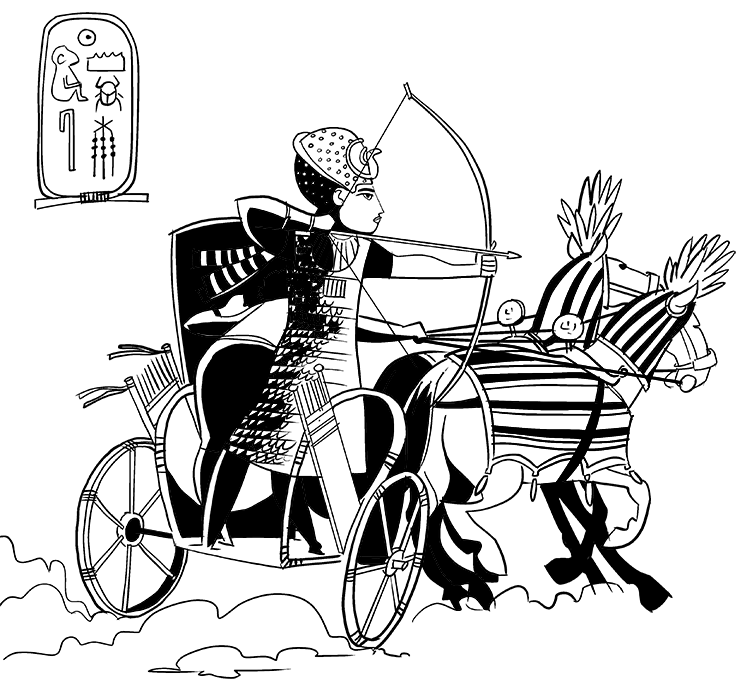
Thutmose III
After Hatshepsut died, her son took over, finally, as pharaoh. He largely continued on the successes of his mother, turning this into a dynamic duo of Egyptian pharaohs.
Maybe it was all that time waiting to be pharaoh while his mom ruled Egypt that set Thutmose III up for success. Or maybe he was a natural born leader who should have taken over sooner.
Who knows?
But no matter what, all that time sitting around watching his mother must have made him rather eager to go out and see the world.
Once he took power, Thutmose III embarked on a number of ambitious military campaigns designed to conquer foreign lands and enlarge Egypt to never-before-seen heights.
In fact, he did so much of this that many people now refer to him as the “Napoleon of Ancient Egypt.”
Whether or not this is a good thing is a matter of debate. But it doesn’t change the fact that Thutmose III expanded Egyptian borders so extensively that Egypt was, for the first time ever, an empire.
In the end, all this really did was put a target on Egypt’s back and draw the attention of the Persians and Greeks, both of whom would conquer Egypt at one point. But at the time it must have been pretty cool to rule over an Egypt that was more powerful than it had ever been before.

Tutankhamun (King Tut)
Just like those athletes who go to the All Star game every year just because of their names, King Tut (full name Tutankhamun) makes it onto this list for pretty much no other reason than he’s King Tut.
So, what’s so special about this guy, then?
Well, he’s famous because, thanks to him, we know more about ancient Egypt and its rulers than we could have ever possibly hoped to know.
You see, King Tut was buried in a place known as The Valley of the Kings. This was a large burial site home to more than 50 tombs and 500 people. In these tombs were great artifacts — the Egyptians believed they could take their things with them to the afterlife. But they were stolen over the centuries by graverobbers and looters.
But not King Tut’s tomb!
They seem to have missed his, and it was discovered in 1922. By examining the many artifacts left inside, Egyptologists (fancy word for people who study Egypt) have been able to unlock many secrets about Egypt and its rulers.
Of course, you would think that with all this stuff they would have learned lots about Tutankhamun the man, no?
Wrong!
We know pretty much nothing about King Tut himself. So, while he may be one of Egypt’s most famous pharaohs, it’s worth asking, does he deserve it?
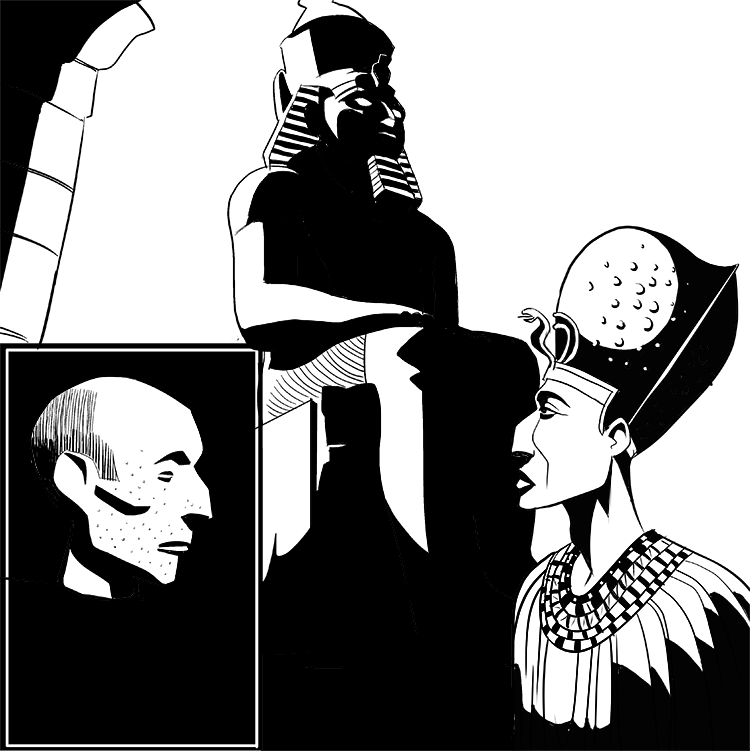
Ramses II
Perhaps no one on this list can make a better claim to the title of “most famous pharaoh” than Ramses II. Also known as Ramses the Great, this guy is a rockstar in Egyptian history.
First, he ruled during the most prosperous part of Egypt’s most prosperous period. So he’s got that going for him. But he also did his part to make a name for himself by taking his armies all the way up into what is now Turkey, Syria, and Iraq, further than any other Egyptian army had gone.
In truth, he did not manage to conquer any of these lands in a meaningful, lasting way. But that he made it all the way up there was a feat in and of itself.
All of this conquest, plus Ramses II’s skills as a diplomat, brought unprecedented wealth and splendor into Egypt. But Ramses II, while great, may have also been Egypt’s downfall.
Overcome by the momentum of his successes, Ramses II indulged in lavish luxuries and commissioned many great construction projects. He also had a long rule; it lasted over thirty years. These are all significant accomplishments, but they also drove the empire into financial disarray, a problem inherited by the successor to Ramses II.
In the end, Ramses the Great brought Egypt to new heights, but upon his death, there was nowhere else to go except down.

Ptolemaic Egypt
The final era of independent Egypt is known as Ptolemaic Egypt. It was run by a Greek family, led by a man named Ptolemy, and by six successors who all also took the name Ptolemy.
During this time, Egypt changed dramatically. The influence of Greek culture, as well as the growth of Alexandria, made Egypt more connected than ever to the rest of the world. And this made it all that much more desirable.
Ptolemaic Egypt was a time of prosperity, but it was also Egypt’s final breath as an independent nation. And it’s most famous ruler, Cleopatra VII, was the last one to hold the title of Egyptian pharaoh.

Cleopatra VII
By the time Cleopatra VII took the Egyptian throne, Rome was heavily involved in Egyptian politics. So much so that on a trip to Egypt, Rome’s rising star — Julius Caesar — fell in love with Cleopatra and asked for her hand in marriage.
She accepted but returned to Egypt after Caesar was assassinated, labeled an imposter and as a sneak out to take the Roman throne. From there, she met and fell in love with (or seduced?) one of Caesar’s allies Marc Antony, who pledged support to Cleopatra’s rule in Egypt.
However, when Antony declared his support for Caesar’s biological son, and not his adopted son Octavian, as the rightful heir of Rome, he was made into an enemy of the Roman state. He was stripped of all his powers, and Rome declared war on Egypt.
Once this happened, Egypt’s fate was sealed. Cleopatra VII committed suicide and Egypt was left with no heir. It was absorbed into Rome as a province and would cease to be an independent nation.
The story of Cleoptra VII is an infamous one, with many pointing to her captivating beauty. But in spite of all this intrigue, one fact remains, she was the last person to rule over the great society of ancient Egypt.
Who’s the Most Famous of them All?
Clearly, the Egyptian pharaoh dream team is a stacked bunch. We’ve got builders, conquerors, administrators, and much more.
So, who’s the best of the best? Tough to say.
Each one has made their own unique contribution to Egyptian history. And it’s hard to imagine Egypt developing without them.
So maybe asking who’s the best isn’t the right question. They’re all winners, and thanks to them, the world has Egypt to look to as a model of what humans can do.
Written by Matthew Jones
Illustrated by Pablo Velarde Diaz-Pache
